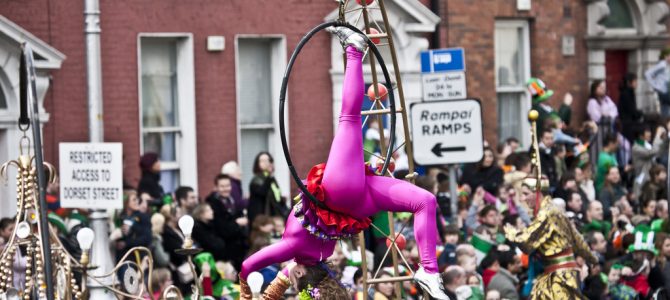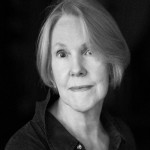
“I am an artist, you know. It’s my right to tell you what to think. I’m chosen. You’re not.” That is the nutshell version of a long-standing effort to wrest art away from bourgeois aesthetic concerns and onto political ones. This tug is at work in every branch of the arts. But for economy’s sake, I will keep to the words art and artist as shorthand for the range of disciplines.
Today’s arts culture—the segment of it that appeals to museum curators, faculty hiring committees, and awards panels—mimics the intellectual fray of the 1960s, itself an imitation of contests begun in the 1910s and ‘20s. From the 1909 Futurist Manifesto, through assorted utopian declarations of the 1960s, on to the hectoring of Mike Pence by the cast of “Hamiliton,” artists have been on a steady, determined march toward ideological preachment.

“The truth of art,” wrote Herbert Marcuse, “lies in its power to break the monopoly of established reality to define what is real.” What is taken as real by graduates of university art departments are the biases that flatter the university’s view of itself as a progressive institution. Coloring that view is the old myth of the artist’s divine spark, a tradition fuelling the mystique of an avant garde.
It is a heady brew. It repudiates inherited models of aesthetic worth, dismissing hard-won mastery as technical hokum. At the same time, it seduces art majors—novel creatures, historically—to see themselves as an intellectual class commissioned to awaken audiences from acceptance of the status quo. The ultimate aim of the contemporary artist’s training is not facility, not ease with one’s métier, but the political or social message. Since there is no end to things to be anguished about, Hope ‘n’ Change can last forever.
I Thought Artists Were Against Censorship
Right now, the art-and-culture bubble is iridescent with gloom. Election Day was an alarm to mobilize combatants in the culture war to lift the yoke of our oppression. Here in my inbox is a “Dear Colleague” letter from the board of the U.S. chapter of the International Association of Art Critics (AICA), a nongovernmental organization founded in 1950 by the newly formed United Nations:
We’re getting in touch to let you know it is time to renew your membership. But first we’d like to say how deeply troubled and saddened we are by the responses of hatred that we’ve been seeing and hearing about following the results of our presidential election. One of AICA’s founding principles was a statement against censorship. As art critics and writers, we are committed to contribute to mutual understanding of visual aesthetics across cultural boundaries, and to defend impartially freedom of expression and thought and oppose arbitrary censorship. We can’t know what 2017 will be like, but with your renewed membership, AICA-USA will work to redouble our commitment to these values as we head into uncertain times.
Who is doing the hating? Perhaps the board missed Matt Welch’s column in Reason last March: “During her October 2015 testimony in front of the House Select Committee on Benghazi, she [Hillary Clinton] issued the remarkable claim that the murdered cartoonists of the French satirical newspaper Charlie Hebdo ‘sparked’ their own assassinations by drawing caricatures of Mohammed—the free expression equivalent of blaming rape victims for wearing short skirts.”
Someone forgot to tell the board of directors that their preferred candidate thought there ought to be a law, with federal penalties attached, against controversial entertainment—including movies that criticize a politician named Hillary Clinton. This same board stood proud when AICA held its annual international congress this past October at the Museo de Belle Artes in Havana, where freedom of thought and expression are non-issues.
The eminent College Art Association (CAA) encourages attendance at its 2017 Annual Conference with this: “Given the political climate in the United States right now, CAA knows it is of utmost importance to address issues at the intersections of race and contemporary art, colonialism in art history, and the Black Lives Matter movement at the 2017 Annual Conference.”
Conference highlights include a discussion on “Public Art in the Era of Black Lives Matter;” “Picturing Social Movements from Emancipation to Black Lives Matter,” a panel titled “Post-Black and Liquid Blackness” in contemporary African American art; and a talk by Evie Terrano, PhD, an art historian whose topics include challenging the authority of the Confederate flag.
Brushes Aside! We Have Politics to Do
Trump’s victory has affected even the artists’ listserv I belong to. The list began as a handy way to circulate useful information among visual artists in and around New York City. It affirms Picasso’s contention that only critics natter about form and content. When artists get together, they just want to talk about “where to buy cheap turpentine.”
Postings usually keep to methods and materials, the cookery of things. (“If your umbers are drying too quickly, try a little clove oil.”) Subscribers help each other out with the vital questions: Who has the name of a low-cost art mover? What are they paying studio models these days? Can anyone recommend a plumber?
But since Election Day, politics has been gaining ground. This is every cultural worker’s hour to repudiate formalist hocus pocus and encourage solidarity in the arts in service to the noble cause of building . . . no, not communism. Just left-leaning liberalism epitomized by the First Woman not-yet-President.
A December 3 broadcast touted an “action plan” to stop Trump. Remember, he still has not been elected. That happens in the Electoral College on December 19. There were only 16 days left.
Innocuous ornaments like the easel-picture could wait. Better to sign and distribute an Electoral College petition to make Hillary president. Initiate individual contact with specific electors. Keep this Change.org petition in the public’s consciousness by contacting TV stations, reporters, and bloggers. Organize and direct grassroots action; man phone banks; write letters. Promote protests in state capitals on December 19.
A fabric artist—whose hand-stitched work eyeballs the worldwide immigrant crisis, gun violence, health care, and marriage equality—stepped forward to offer her own efforts to the new cause:
Because of the election of Donald Trump I am planning on periodically posting information of events that are in reaction to Trump’s presidency. These events could be demonstrations, teach ins, lectures, study groups, art exhibits, calls for art, readings and performances. If you know of any events that you would like to share on this list and if you would like to receive this list please contact me at . . . .
Westbeth, an affordable housing complex for artists on the former site of Bell Laboratories, jumped into the ring to promote “Write Now: A Participatory Installation” assembled to address a world suddenly “in upheaval” by giving artists and visitors to Westbeth Gallery an opportunity to address their feelings. Participants receive Post-It notes in four different colors. They can use as many notes as needed to express their pensées. They can draw, collage, paint, write, or sculpt on them before sticking them on gallery walls.
In addition, participants are encouraged to donate to four recommended charities. The character of Westbeth’s policy preferences is clear in their selected endorsements: Planned Parenthood; the Ali Forney Center for gay and transgender teens; God’s Love We Deliver, a service for HIV/AIDS patients; Cabrini Immigrant Services, a boon companion to illegal aliens seeking social services.
You’re Fueling Trump Again, People
Dark times are upon us. Now more than ever, artists are needed to save us from the snare and the pit. An excerpt from one painter’s lengthy morning-after listserv reflection illustrates the current sense of mission:
I have a responsibility to engage in our communities. In fact, I must admit I feel artists might even bear more responsibility than the general public, as we have special gifts to offer. . . . We offer personal strengths unique to us as artists. I’ve noticed that the anti-fracking community is composed of an inordinate number of artists, and often wondered why. My sense is that because artists are well-educated, more able than most to think ‘outside the box,’ accustomed to taking chances in their art and risks in their lives, artists are among the first to recognize a societal problem, and among the first to search for solutions. . . . Artists perform every type of role imaginable, and have been critical to any of the successes we’ve had. . . .
Now it is time for each of us to act in whatever way feels right to us as individuals and as artists, but definitely to act.
Here is a pitch-perfect sample of the elitist self-regard that contributed to Trump’s victory. The writer, a painter, takes for granted his own rectitude. He also assumes his audience is equally offended by an election that went against the grain of worthier preferences. Worthiness, you see, is a natural result of intellectual superiority. It comes with those special gifts and unique strengths unavailable to lesser sorts.
It never occurs to the arts community that it has no more political insight or civic savvy than its neighbors. Like the “anti-fracking community,” the fraternity might have less. Its image of itself as occupying a privileged place in the moral universe is a distorting lens through which self-congratulation looks easily like discernment.
Your ‘Education’ Consists of Indoctrination
Stay for a moment with that term better educated. There is humor in that. Since the post-World War II era, when art training began to shift in earnest from the atelier to the campus, artists have breathed the same infantilizing culture that infects academia.
Consider the University of Delaware’s current pitch for its master of fine arts program. Second-year MFA students are invited to a 9-day frolic dubbed “Barefeet and Birthday Suits: MFA in Berlin.” Tuition is free for this “unique international experience partially funded by private charitable donations.” (Any wonder why millennials went for Bernie Sanders?)
Imagine a program for medical or law students hawked in terms more suggestive of a nudist colony than professional expertise. But then, expertise is an outmoded concept in an area of activity to which the word discipline is hard to apply. Painters, sculptors, and gifted craftsmen still exist. But they are outnumbered by contemporary artists adrift in a sea of undifferentiated “practices,” a portmanteau word for holding whatever posture an MFA drops into it.
By their Post-It notes you will know them.









